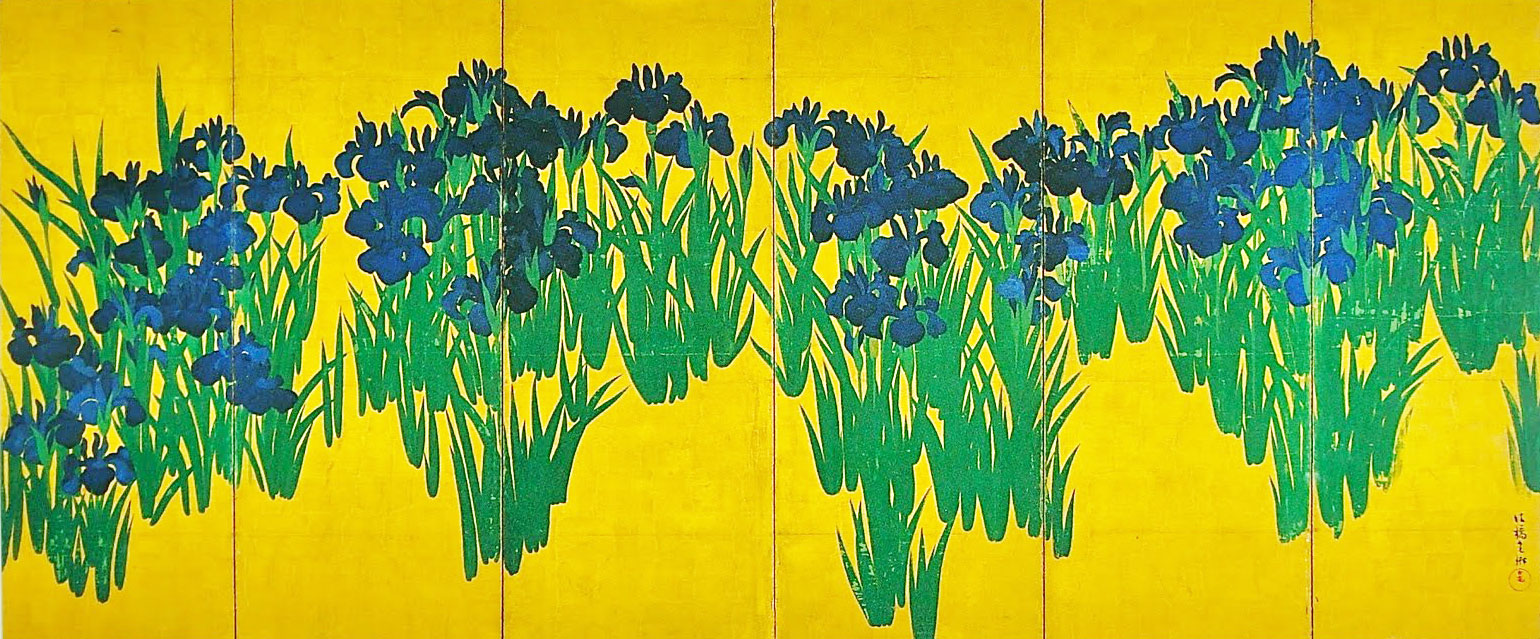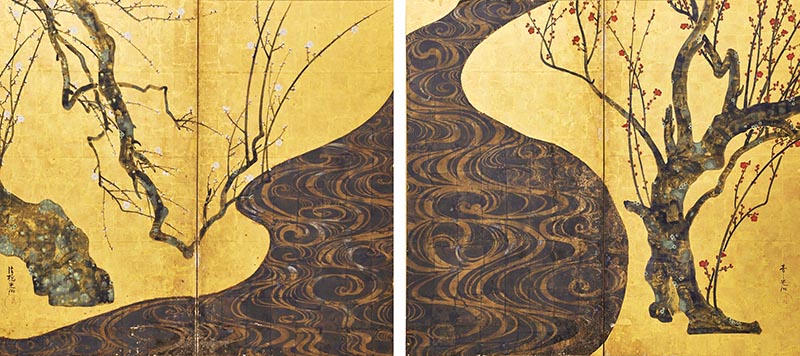
Ogata Korin, the leading figure of the Rimpa school
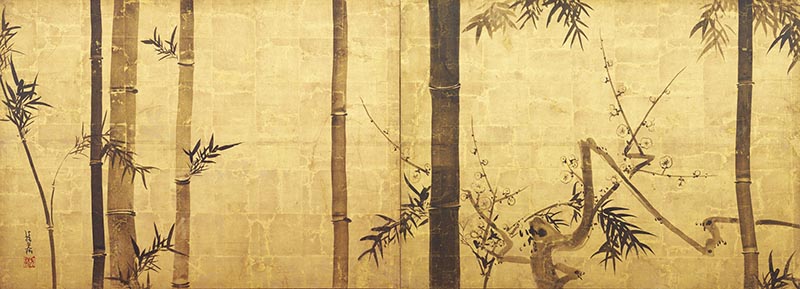
Ogata Korin was an artist active in the world of painting and crafts in the mid-Edo period. A development of the Rimpa school founded by Tawaraya Sotatsu and Hon’ami Koetsu, Ogata Korin left behind gorgeous and decorative Byobu-e (folding screen paintings), elegant Suiboku-ga (ink painting), and crafts in lustrous gold and silver. His outstanding designs had a profound influence on later Japanese art, as well as on artists overseas.
Korin’s representative works include “Yatsuhashi Makie Raden Suzuribako” (Writing Box with Eight Bridges) and “Kakitsubata Zu Byobu” (Irises on a folding screen).
Biography of Ogata Korin
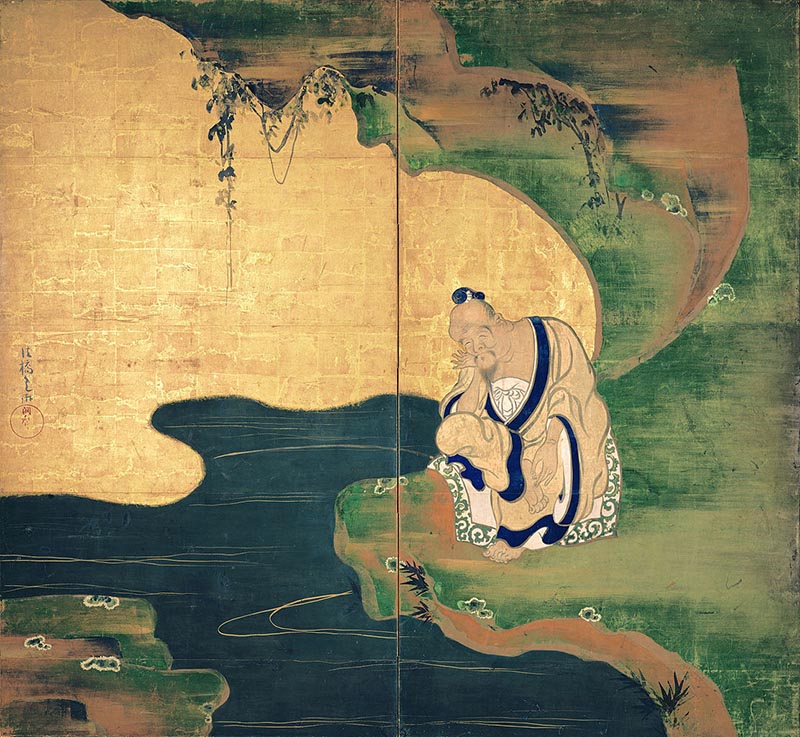
Ogata Korin was born in 1658 as the second son of a high-class kimono merchant, Gankinya, in Kyoto. Ogata Korin’s grandfather was a famous calligrapher, and Ogata Kenzan, known for his ceramics, was Korin’s younger brother.
Korin grew up with no difficulty, learning calligraphy from an early age and dancing in Noh performances, acquiring the education and aesthetic sense of a wealthy merchant’s son.
In 1678, when Korin was 21 years old, Tofukumon’in, the biggest customer of Gankin-ya, died, and the Gankin-ya went into decline. When his father died that Korin was 30 years old, his father’s inheritance soon ran out, and he was forced to live in financial poverty, going to pawn shops and borrowing money from his relatives.
Ogata Korin, who had been exposed to luxury and cultivated his sense of culture since childhood, was allowed to visit the residence of Tsunahira Nijo, the 18th head of the Nijo family, as a courtesan and refined his sense of beauty while dealing with court nobles and the upper class.
Until his early 40s, Korin excelled at ink and light color paintings reminiscent of the Kano and Tosa schools, but after turning 40 and beginning to work seriously as a painter, he emerged as a prominent figure and was given the rank of Hokkyo as a painter at the age of 44.
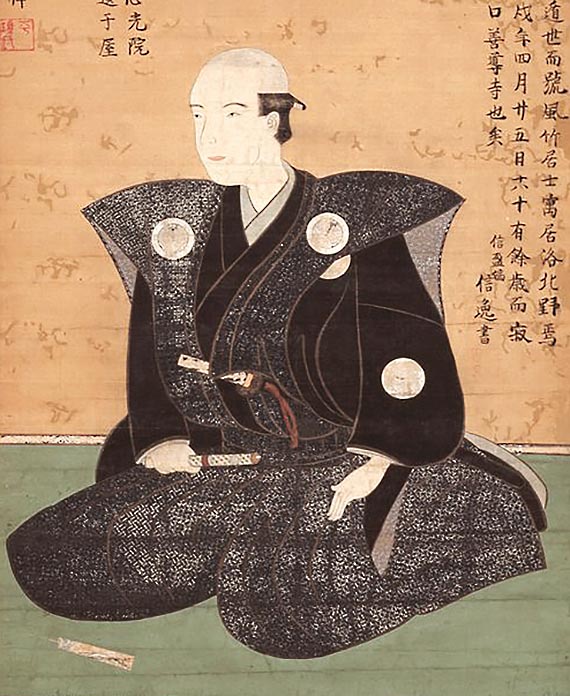
Around 1701, as Ogata Korin’s friendship with his wealthy patron Nakamura Kuranosuke grew, his works became more luxurious and opulent. His masterpiece, “Kakitsubata Zu Byobu” was produced around this time, a time that could be called the springtime of Ogata’s life.
Around 1703, Korin returned to a life of poverty, mortgaging his house to pay debts, and when he was forced to move east in 1704, he quietly worked on the painting orders he had received while performing the unfamiliar duties of a feudal lord.
In 1709, Korin returned to Kyoto from Edo, where he had stayed for four and a half years, and built a new house with a studio on Shinmachi-dori, Nijo-sagaru, Kyoto, where he produced his works in his later years.
In 1716, Korin died at the age of 59.
Despite his flamboyant style, Korin often found it difficult to make a living. In his later years, he left excellent works such as “Kohakubai Zu Byobu” (Folding Screen of Red and White Plum Blossoms), but in his last will and testament, he left a statement to the effect that “I have no occupation at present,” and Korin himself did not recognize his occupation as a painter.
Ogata Korin’s masterpiece
Ogata Korin “Kakitsubata Zu Byobu” (Irises on a folding screen)

Ogata Korin “Kakitsubata Zu Byobu” (Irises on a folding screen) is a six-panel Byobu-e (folding screen painting) in bright blue and green on gold leaf, based on one of the eight bridges in the ninth section of the Tale of Ise.
Ogata Korin, who developed the glittering gold and silver Rimpa school, created a rhythmical pattern by repeating the pattern on some of the swallow-tail flowers, with an idea typical of the son of a kimono shop owner.
“Irises on a folding screen” is designated as a National Treasure.
Ogata Korin “Kohakubai Zu Byobu” (Folding Screen of Red and White Plum Blossoms)

“Kohakubai Zu Byobu” (Folding Screen of Red and White Plum Blossoms) is a folding screen painting that is considered a masterpiece of Ogata Korin’s later years.
The bold composition of black water streams, reminiscent of craftwork, crossing the center of the screen, with white plum blossoms on the left and red plum blossoms on the right, is the ultimate example of Korin’s “mastery of arrangement”. The water stream pattern is created by oxidizing silver leaf, a craft technique.
“Kohakubai Zu Byobu” is designated as a National Treasure.
Ogata Korin “Yatsuhashi Makie Raden Suzuribako” (Writing Box with Eight Bridges)
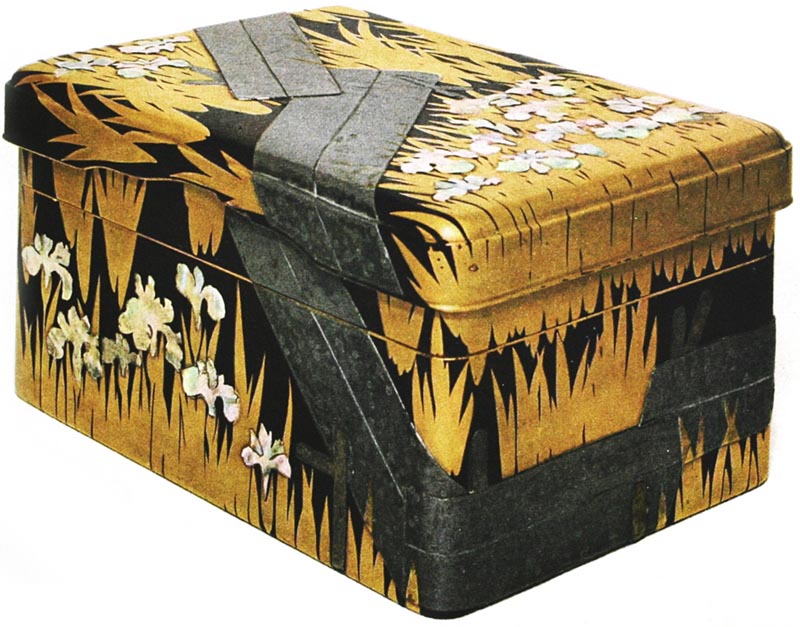
Ogata Korin “Yatsuhashi Makie Raden Suzuribako” (Writing Box with Eight Bridges) is a gorgeous and gorgeous inkstone box inspired by the ninth step of Ise Monogatari, “Yamakawa no Kuni Yatsu-hashi”. The inkstone box is surrounded by Korin’s signature swallow-tail flowers in full bloom, and the upper section is an inkstone box, while the lower section is a paper holder.
The black background of the “Yatsuhashi Makie Raden Suzuribako” is made of lacquer, the swallow-tail flowers are in mother-of-pearl inlay, the leaves and stems are in gold makie lacquer, and the bridge is in silver and lead plate, as if the writing box were wrapped in a Byobu-e.
“Yatsuhashi Makie Raden Suzuribako” is designated as a National Treasure.
Popularity and Features of Ogata Korin
The glittering gold and silver art of the Rimpa school

When one thinks of the Rimpa school, the first things that come to mind are paintings and crafts with gorgeous decorations, such as Byobu-e with gold and silver leaf and glittering inkstone boxes that make the most of the Tarashikomi technique.
One of the characteristics of Korin’s works is the glittering gold and silver leaf decoration and bold design. While based on the Yamato-e style, he also developed the Rimpa school, founded by Tawaraya Sotatsu and Hon’ami Koetsu, by utilizing his original ideas as the son of a kimono merchant, including the occasional use of katagami (stencils).
A wide range of talents from painting to crafts
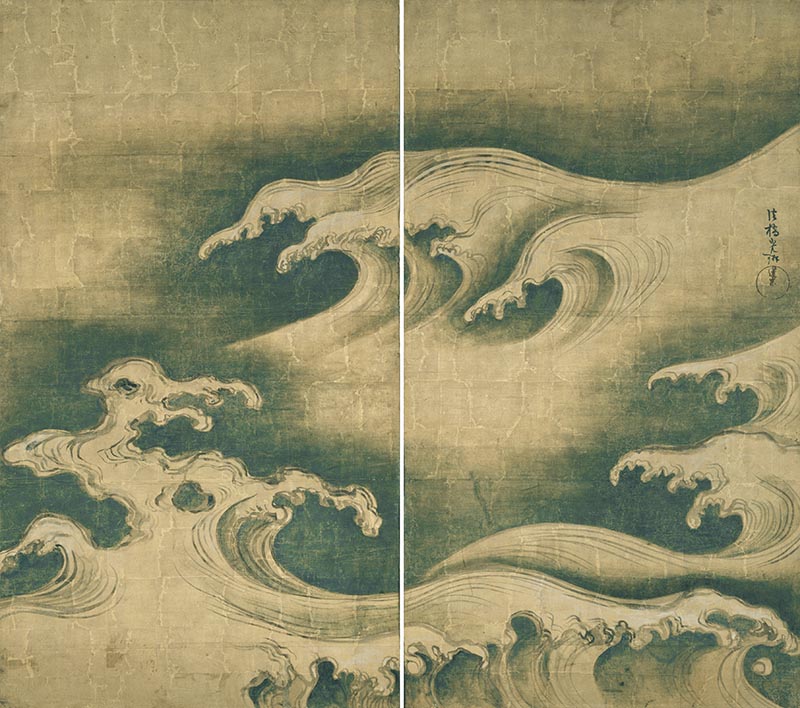
Although Ogata Korin has a strong image of Byobu-e and Maki-e, he showed his talent in a wide range of fields, including ink painting, fan painting, and painting on pottery.
Korin’s Suiboku-ga varied in style according to his age. The Suiboku-ga he produced in his early 40s were strongly influenced by the Kano and Tosa schools, while after moving east to Edo showed the influence of his study of Sesshu’s Suiboku-ga. It may be said that this is typical of an artist of the Rimpa school, who learned the best aspects of works through private study and incorporated them into his own works.
Clever design with an excellent sense of balance

The Rimpa school incorporated skillful compositions and ornamentation in the glittering gold and silver paintings on Byobu-e. Ogata Korin’s works are characterized by a clear, flamboyant, and decorative style while utilizing the strength and designs of the classics. His skillful designs even led to the popularity of “Korin patterns” that followed Korin’s style.
Relationship between Ogata Korin and Tawaraya Sotatsu
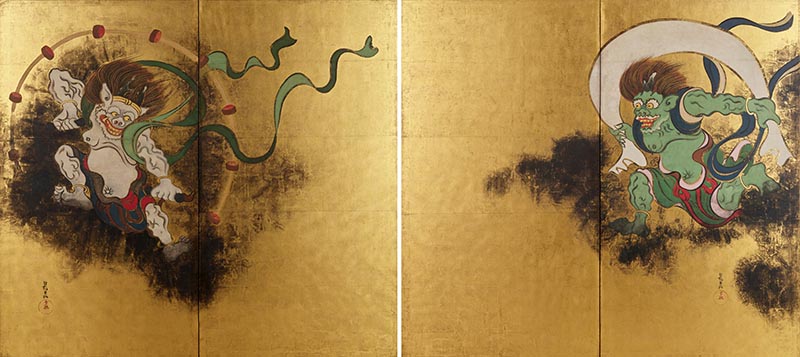
Ogata Korin was strongly influenced by Tawaraya Sotatsu, who is considered the founder of the Rimpa school.
Although Korin studied and was influenced by the works of Sotatsu, Korin was not born until after Sotatsu died, and there is no direct connection or master-disciple relationship between them.
There is a story that Byobu-e by Tawaraya Sotatsu hung in Kariganeya, a kimono shop where Ogata Korin was born and raised, and it is possible that Korin was exposed to Sotatsu’s artistry at a very young age.
Hon’ami Koetsu, who is considered the founder of the Rimpa school along with Tawaraya Sotatsu, is a distant relative of Ogata Korin.
Ogata Korin’s influence and reputation
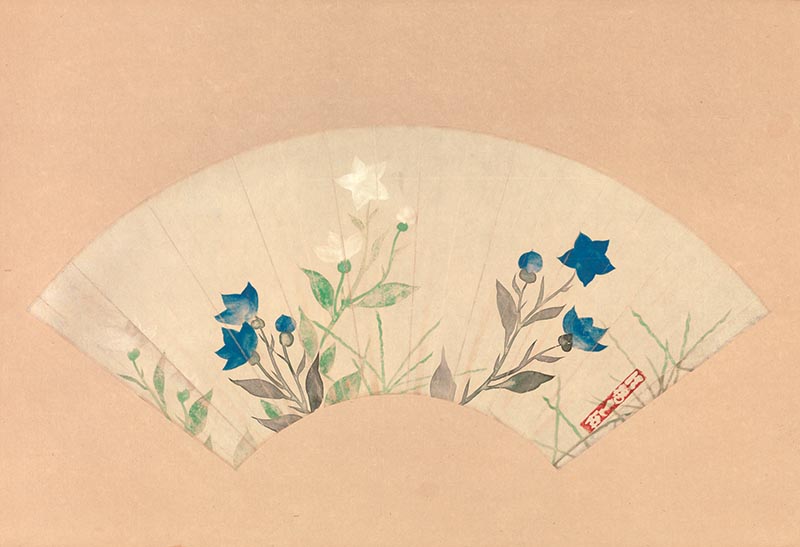
The works of Ogata Korin, the leading figure of the Rimpa school, were highly acclaimed in the Edo period for their novelty and superior design. The high artistry of the Rimpa school, developed by Korin and passed down to Sakai Hoitsu and others, has been passed down to many painters since then, and is widely supported by artists and the general public up to the present day.
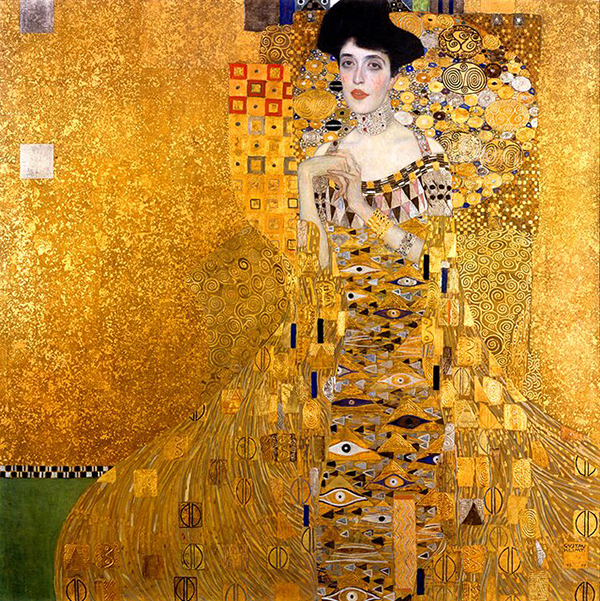
The Rimpa school of paintings and crafts developed by Ogata Korin also had a profound influence on foreign art.
Gustav Klimt, in particular, is known as a painter who studied Rimpa and Ukiyo-e with great enthusiasm, and some of Klimt’s works show a strong Rimpa influence.
Korin’s flamboyant decorative style and high sense of aesthetics are supported across countries.
Summary of Ogata Korin

Ogata Korin developed the Rimpa school, founded by Tawaraya Sotatsu and Hon’ami Koetsu, by utilizing the Yamato-e tradition and Korin’s own unique style of paper stencils and bold compositions. Ogata Korin, who applied the flamboyant and highly decorative Rimpa school of art not only to paintings but also to crafts, gained wide support from the shogunate, feudal lords, and the general public.
Korin’s style has continued to influence a wide range of paintings and crafts from the Edo period to the present day.
